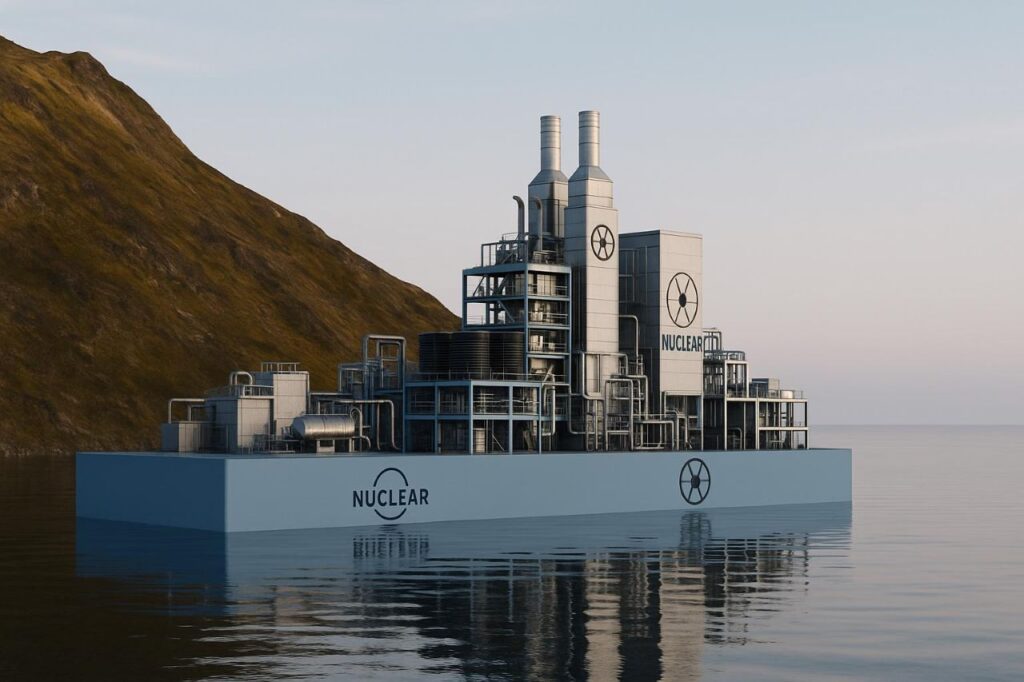Norway is relying on floating nuclear power plants to supply remote regions and offshore projects with climate-neutral electricity. The country is using its maritime experience in shipbuilding to deploy modular reactors on barges. (neimagazine: 14.08.25).
Floating nuclear power plants as a supplement to hydropower
Norway covers almost all of its electricity needs with hydropower. The numerous rivers, lakes, and mountain valleys offer ideal conditions. Nevertheless, companies such as Norsk Kjernekraft and Ocean-Power AS are considering entering the nuclear energy market. A feasibility study conducted in Aure in 2024 forms the basis for the construction of floating platforms.

Image generated by AI
Military ships have been using nuclear reactors for a long time, while civilian applications have so far been largely unsuccessful. The research vessel Otto Hahn was not economically viable and had to be decommissioned in the 1970s. Today, however, rising CO₂ costs and international climate targets are changing the landscape. China is also pursuing a similar approach with a planned container ship.
Advantages of platform technology
The Norwegian solution differs from traditional reactor ships. The floating nuclear power plants are intended solely to supply electricity, not to provide propulsion. The units can be built in shipyards and flexibly anchored at coastal or offshore locations.
“This is an important step in the right direction to ensure a long-term commitment to nuclear energy in Norway, involving the best companies in Norwegian industry,” explains Jonny Hesthammer, CEO of Norsk Kjernekraft. Critics, however, point to risks such as radioactive waste or possible leaks in sensitive waters.
New reactor generations for greater safety
At the same time, technology is continuing to develop. Fourth-generation reactors rely on passive safety systems. Molten salt reactors automatically stop the process in the event of overheating, as the fuel also serves as a coolant. China plans to use thorium in such reactors for its projects.
Ocean-Power is also working on gas-powered platforms. The expansion into nuclear power is intended to reduce dependence on fossil fuels. The goal is a reliable and emission-free source of electricity for maritime projects.
Russia shows the way
Russia has been operating the Akademik Lomonosov since 2019. This floating nuclear power plant supplies the port city of Pevek with electricity and district heating. Two reactors each deliver 35 megawatts and are based on technology used in icebreakers. Further plants are in the planning stage, two of which are scheduled to start operating in 2028.
The United Kingdom, Denmark, and South Korea are also developing their own concepts. These range from container-sized micro reactors to compact molten salt reactors. Global competition for safe and flexible solutions is gaining momentum.
Conclusion: A new chapter in energy policy
Whether floating nuclear power plants will become globally established remains to be seen. Their mobility and power output open up new possibilities for reliably supplying entire regions. Norway could be a pioneer with its project—not because of its tradition in reactor technology, but because of its maritime experience and innovative strength.
